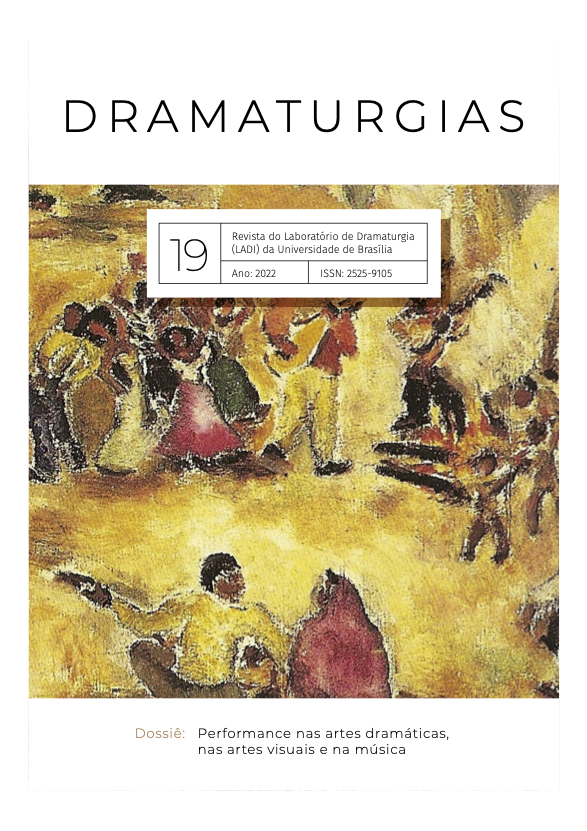The Interatistic Poetics of Marguerite Duras: sounds and visuals, proposing political reflections
DOI:
https://doi.org/10.26512/dramaturgias19.45012Keywords:
Marguerite Duras, Judith Butler, Interartistic, GenderAbstract
This article proposes an analysis of the interartistic composition in the film
India Song (1975), directed by Marguerite Duras. The visuality of the work and
its analogy with the visual arts will be explored, as well as the sounds of the
film, which are fundamental for understanding the narrative. The work is analyzed from this intersection between artistic languages that participate in political criticism, social and gender issues, which Duras performs. The research is based on Judith Butler’s theory of performative genre and highlights its relationship with parody in the representation of characters. The methodological proposal uses film analysis guidelines from theorists Jacques Aumont, e Michel Marie, based on image studies.
Downloads
References
L’article propose une l’analyse de la composition interartistique dans le film
India Song (1975), réalisé par Marguerite Duras. La visualité de l’oeuvre et son
analogie avec les arts visuels seront explorées, ainsi que les sons du film,
fondamentaux pour comprendre le récit. Le travail est analysé à partir de cette
intersection entre les langages artistiques qui participent à la critique politique, aux questions sociales et de genre, que Duras interprète, La recherche s’appuie sur la théorie du genre performatif de Judith Butler et met en évidence son rapport à la parodie dans la représentation des personnages. La proposition méthodologique utilize les lignes directrices de l’analyse cinématographique des théoriciens Jacques Aumont et Michel Marie, a partir d’ études d’images.
Downloads
Published
How to Cite
Issue
Section
License
Copyright (c) 2022 Autores mantém os direitos autorais e concedem à revista o direito de primeira publicação, com o trabalho simultaneamente licenciado sob a Licença Creative Commons Attribution que permite o compartilhamento do trabalho com reconhecimento da autoria e publicação inicial nesta revista.

This work is licensed under a Creative Commons Attribution-ShareAlike 4.0 International License.
Autores mantém os direitos autorais e concedem à revista o direito de primeira publicação, com o trabalho simultaneamente licenciado sob a Licença Creative Commons Attribution que permite o compartilhamento do trabalho com reconhecimento da autoria e publicação inicial nesta revista.



